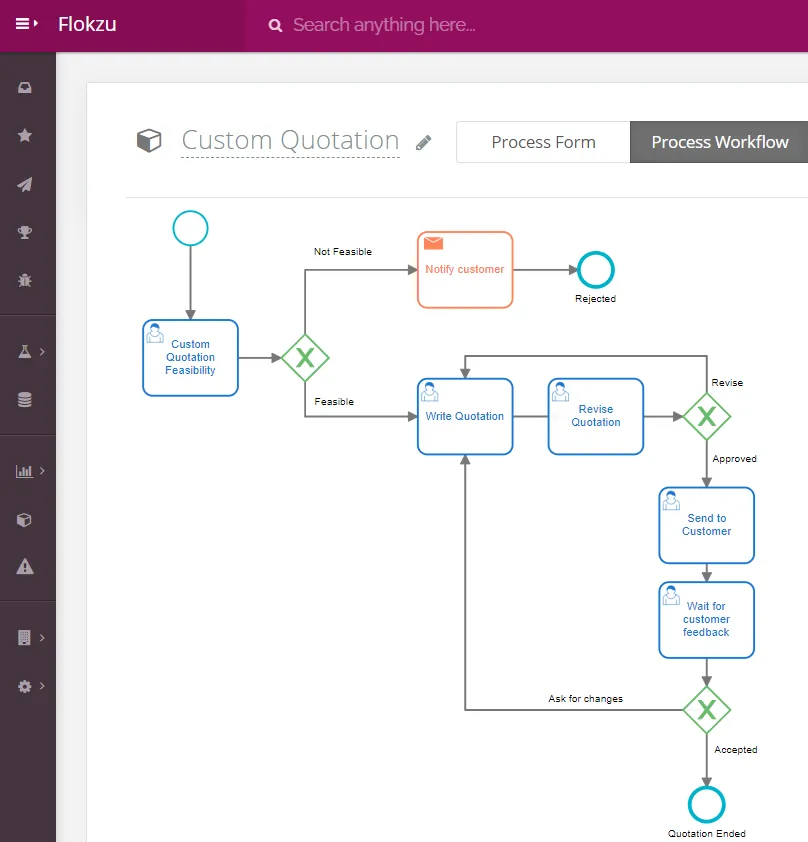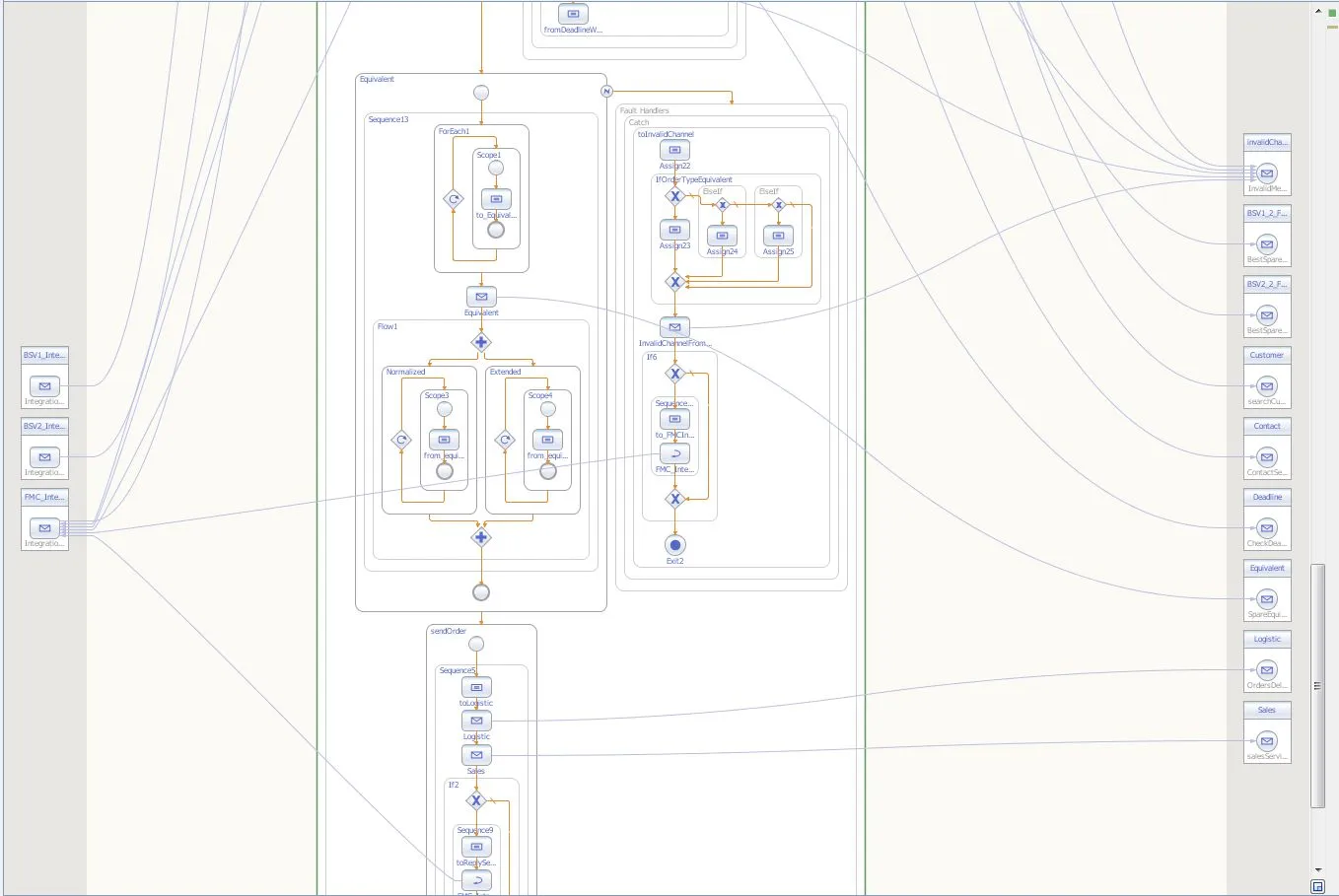Business Process Modeling: history and present.
Blog: Flokzu
Business process modeling (also called “business process modeling”) is the technique by which a formal and explicit abstraction of a real business process of an organization is achieved.
A bit of history.
The origin of process modeling can be traced back to the 19th century when Gantt charts were invented in 1899 (source). However, the most important push came in 1920 with the introduction of the popular flowcharts.
From the beginning, flowcharts had the enormous advantage of being very easy to understand and therefore easy to use:

The formalization of process models
The enormous ease of use and flexibility that flowcharts provide has a flip side. They are very informal. And therefore, they can lend themselves to misinterpretation, ambiguity, and are definitely very (or impossible) to automate using a process engine. For these reasons, several initiatives emerged in the following decades that tried to give a more formal framework to process models.
In the 1970s (among other initiatives), the Unified Modeling Language, or simply UML, emerged, which had great success and adoption among the business process management practitioner community. As its name implies, it was based on a set of unified rules for modeling different elements of reality, including processes.
State transition diagrams and activity diagrams are part of UML and were widely used. It is worth noting that they were oriented, and their main audience was computer scientists and people related to computer science. Business users did not adopt them, although it was desired.
BPML and BPEL: they wanted to and they could not.
The Business Process Modeling Language (BPML) emerged as a high-level initiative so that business users could actually adopt it and model their processes. It was not as successful as expected, mainly because it did not achieve mass adoption, and was deprecated in 2008.
It also emerged, with great potential and support from the world’s largest players (IBM and Microsoft among them), the Business Process Execution Language (BPEL). This language was mainly oriented to the orchestration of web services (in fact, its last version was called WS-BPEL 2.0). It did not have a standard graphical representation, so each vendor adopted its own (see below for an example). Clearly, this language was not oriented to business users either, so it did not have massive adoption.

And then came the world standard for Business Process Modeling.
After all these initiatives, a notation called Business Process Modeling Notation (BPMN) finally appeared and was widely accepted by the market. Clearly, the notation balanced the necessary formality with the desired simplicity. This near-perfect balance was the trigger for rapid adoption by the majority of the world’s process management practitioner community.
So important was BPMN that it was adopted as a standard by the OMG and is currently at version 2. In other words, it followed the reverse path, which almost never happens; first, it was embraced by the market, and then it was a standard supported by a recognized organization.

Conclusions
In this post, we have briefly reviewed how the world has been searching for a standard for business process modeling for more than 100 years. This has happened because it is absolutely fundamental to be able to model processes in order to understand, discuss, automate and improve them.
Fortunately, we live in a time when this discussion has been settled. There is a worldwide standard for process modeling, which is BPMN. It no longer makes sense to use other proprietary notations or weird inventions from a few minor vendors. The business and technology community has already gone through these stages and has chosen BPMN as the universal standard, both for business users and IT staff.
Naturally, and for these same reasons, at Flokzu we support BPMN from day 1 and allow direct automation, from the graphical model of the process to its execution in the application (low-code / no-code).
Further reading:
- Modeling a business process using BPMN – info-graphics
- What is BPMN? Standard notation for process modeling
- What is a BPMN Engine? Modeling and automating in 1 click.
Schedule here a one-hour session and we will help you to implement one real process of your organization.
The post Business Process Modeling: history and present. appeared first on Flokzu | Cloud BPM & Cloud Workflow.

